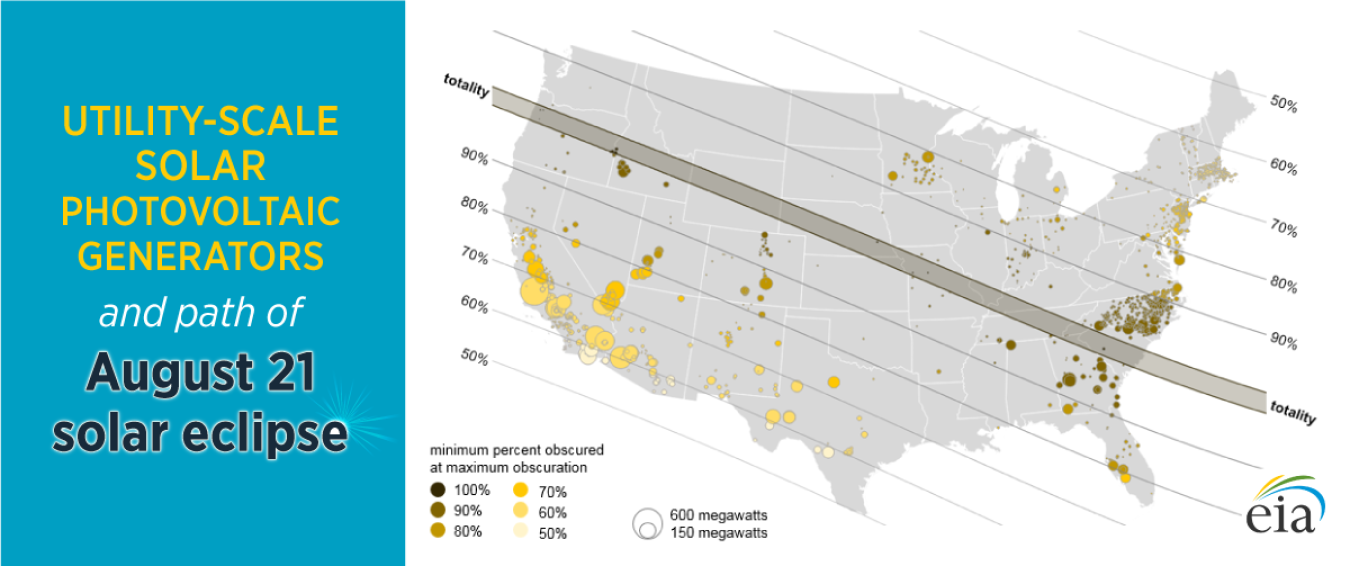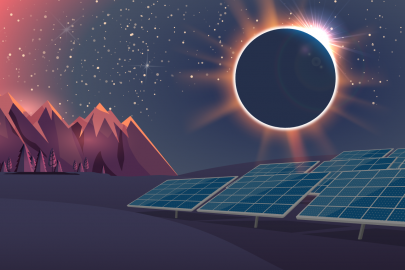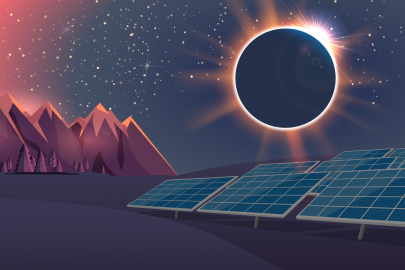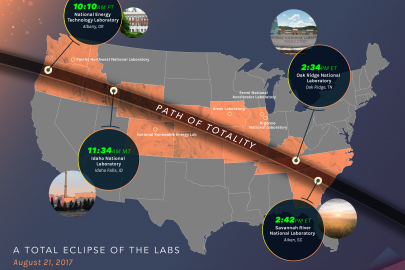August 21, 2017 marks the first total solar eclipse in nearly a century that spans the entire United States. In that century, our country’s electric grid has undergone drastic changes with the addition of large amounts of solar generation capacity, whose output depends on the sun shining. So how will the eclipse affect electricity generation?
From the west coast to the east coast, the moon’s shadow will pass over approximately 1,900 utility-scale solar photovoltaic (PV) power plants and hundreds of thousands of smaller systems. The path of totality, where the sun is completely blocked, only affects 17 utility-scale solar PV generators, mostly in eastern Oregon. Hundreds of plants totaling about 4.0 gigawatts (GW) of capacity—mostly in North Carolina and Georgia—will be at least 90% obscured. These resources will quickly go offline, remain offline for about 2 minutes, and then quickly surge back into service.
As solar energy continues to grow, understanding how to adapt to solar variability will be increasingly important. This eclipse is an opportunity to study how the grid reacts to the change in electricity production and better prepare utilities to address unforeseen interruptions in service in the future.

Western U.S. Eclipse Impact Study
As utilities across the country that use solar during the day prepare to deal with the loss of solar generation during the eclipse, the SunShot Initiative has funded a study with the National Renewable Energy Laboratory and Peak Reliability, which helps coordinate reliability efforts with utilities in the Western United States. By modeling the impact of the eclipse on the Western grid, these researchers help grid operators plan for and adapt to the expected loss of solar generation so that grid reliability can be maintained.
The team behind the report estimates that PV output will drop 5 gigawatts (GW) below typical generation levels during the eclipse. The burden of compensating for the lost energy from solar generators will fall mostly on natural gas powered turbines, which are able to ramp up ahead of the eclipse. Hydro generation—power created from flowing water—will also help to fill the void of solar output, though conservation constraints in the West will prevent it from compensating for all of the lost generation. Read the blog post to learn more.
This research will allow for utilities affected by the 2024 and 2025 total eclipses in certain areas of the United States to better prepare for the events. The report will be finalized after the eclipse so the impacts can be fully studied, and will be posted here upon its completion.
DOE Resources
-
 A new report released by NREL looks at the impact of eclipses and other major weather events on solar generation.
A new report released by NREL looks at the impact of eclipses and other major weather events on solar generation. -
 While only lasting about two minutes in each location, the eclipse will dramatically decrease output of photovoltaic power plants across the U.S.
While only lasting about two minutes in each location, the eclipse will dramatically decrease output of photovoltaic power plants across the U.S. -
 Solar eclipse mania is sweeping across America and for good reason. Here are a few things to keep in mind as the big day approaches.
Solar eclipse mania is sweeping across America and for good reason. Here are a few things to keep in mind as the big day approaches.
NASA Resources
The National Aeronautics and Space Administration, better known as NASA, created a website that provides in-depth information about the eclipse, including common misconceptions, frequently asked questions, and a plethora of education material. They will also have live video streams from locations across the country as the eclipse moves from Oregon to South Carolina. Visit eclipse2017.nasa.gov to check out their resources.

